Search the Special Collections and Archives Portal
Search Results
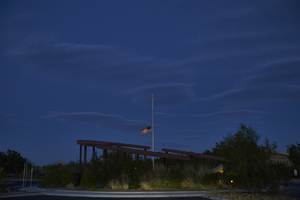
Half staff flag at the Clark County Wetlands Park, Clark County, Nevada: digital photograph
Date
2016-07-09
Archival Collection
Description
An American flag flies at half staff at the Clark County Wetlands Park.
Image
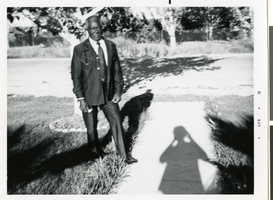
Lee Henry Lisby: photograph
Date
1975
Archival Collection
Description
Black and white photograph of Lee Henry Lisby in a residential neighborhood.
Image
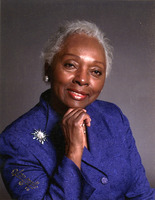
Portrait photograph of Ruth Eppenger D'Hondt, circa 2010
Date
2010
Archival Collection
Description
Color portrait photograph of Ruth Eppenger D'Hondt, circa 2010.
Image
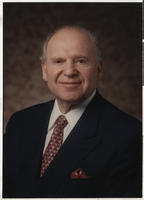
Sheldon Adelson: portrait photograph
Date
1997-07-02
Archival Collection
Description
Photographs from the Greg Cava Photograph Collection -- Chronological shoots -- 1994-1997 -- Job #97-724: Portraits for Venetian file.
Image
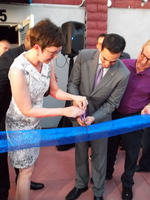
Heidi Swank, Ruben Kihuen, and David Parks attend the Club Metro bar grand opening, Las Vegas, Nevada: digital image
Date
2013-07-20
Archival Collection
Description
From the Dennis McBride Photograph Collection (PH-00263) -- LGBTQ+ events and organizations in Las Vegas, Nevada -- Digital images file. Notes from the donor, Dennis McBride: Ruben Kihuen was later elected to the U. S. House of Representatives from Nevada's District 4. Accused of sexual misconduct he did not seek re-election in 2018. Individuals identified by the donor, Dennis McBride: Heidi Swank [Nevada State Assemblywoman, District 16, Democrat]; Ruben Kihuen [Nevada State Assemblyman, District 10, Democrat]; David Parks [Nevada State Senator, District 7, Democrat (gay)]
Image
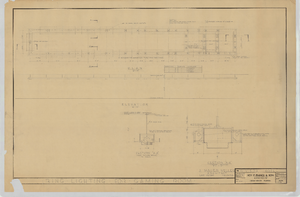
Original Riviera Hotel: original architectural drawing
Date
1954-07-28
Archival Collection
Description
From the Martin Stern Architectural Records (MS-00382) -- Riviera Hotel and Casino: Las Vegas, Nevada -- Project drawings file.
Image
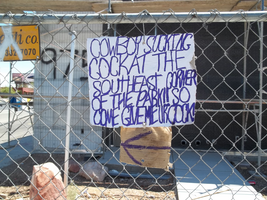
Rebuilding of Spotlight Lounge at new address and explicit sign on construction fence, 975 East Sahara Avenue in Commercial Center, Las Vegas, Nevada: digital image
Date
2012-07-26
Archival Collection
Description
From the Dennis McBride Photograph Collection (PH-00263) -- LGBTQ+ events and organizations in Las Vegas, Nevada -- Digital images file. Notes from the donor, Dennis McBride: The Spotlight Lounge opened in April 1998, then was sold in 2011. There followed a major rebuilding of the bar, which reopened in 2012. The address was changed from 957 to 975 East Sahara Avenue. … The obscene sign pictured here reads, "Cowboy sucking cock at the southeast corner of the park!! So come give me ur cock!"
Image

Rebuilding of Spotlight Lounge at new address and explicit sign on construction fence, 975 East Sahara Avenue in Commercial Center, Las Vegas, Nevada: digital image
Date
2012-07-26
Archival Collection
Description
From the Dennis McBride Photograph Collection (PH-00263) -- LGBTQ+ events and organizations in Las Vegas, Nevada -- Digital images file. Notes from the donor, Dennis McBride: The Spotlight Lounge opened in April 1998, then was sold in 2011. There followed a major rebuilding of the bar, which reopened in 2012. The address was changed from 957 to 975 East Sahara Avenue. … The obscene sign pictured here reads, "Cowboy sucking cock at the southeast corner of the park!! So come give me ur cock!"
Image

David Parks campaign sign, Pecos Road south of East Sunset Road, Las Vegas, Nevada: digital image
Date
2016-07-16
Archival Collection
Description
From the Dennis McBride Photograph Collection (PH-00263) -- LGBTQ+ events and organizations in Las Vegas, Nevada -- Digital images file. Notes from the donor, Dennis McBride: Democrat David Parks was elected to the Nevada State Assembly, 41st District, in 1996, where he termed out in 2008. He then served in the Nevada State Senate, 7th District, from 2008 until he termed out in 2020. This sign is from Parks' 2016 campaign for Nevada State Senate. Individuals identified by the donor, Dennis McBride: David Parks
Image
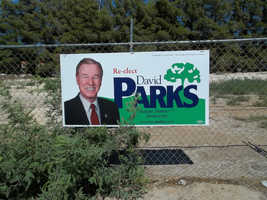
David Parks campaign sign, Pecos Road south of East Sunset Road, Las Vegas, Nevada: digital image
Date
2016-07-16
Archival Collection
Description
From the Dennis McBride Photograph Collection (PH-00263) -- LGBTQ+ events and organizations in Las Vegas, Nevada -- Digital images file. Notes from the donor, Dennis McBride: Democrat David Parks was elected to the Nevada State Assembly, 41st District, in 1996, where he termed out in 2008. He then served in the Nevada State Senate, 7th District, from 2008 until he termed out in 2020. This sign is from Parks' 2016 campaign for Nevada State Senate. Individuals identified by the donor, Dennis McBride: David Parks
Image
Pagination
Refine my results
Content Type
Creator or Contributor
Subject
Archival Collection
Digital Project
Resource Type
Year
Material Type
Place
Language
Records Classification
